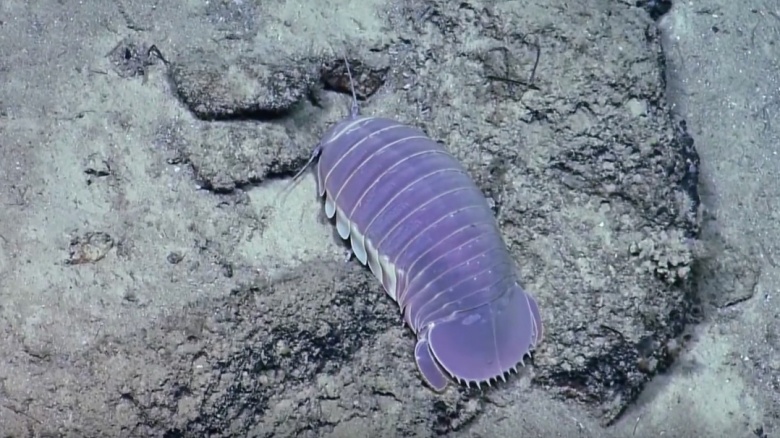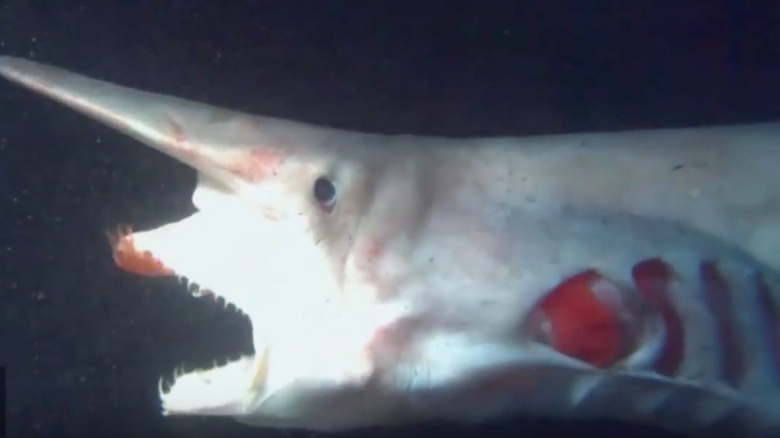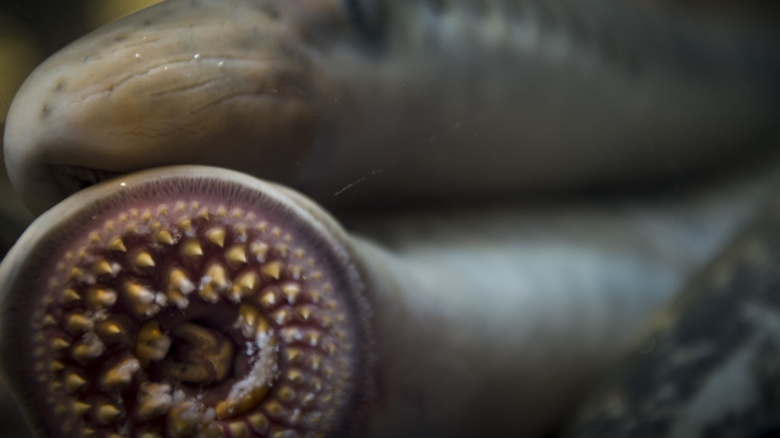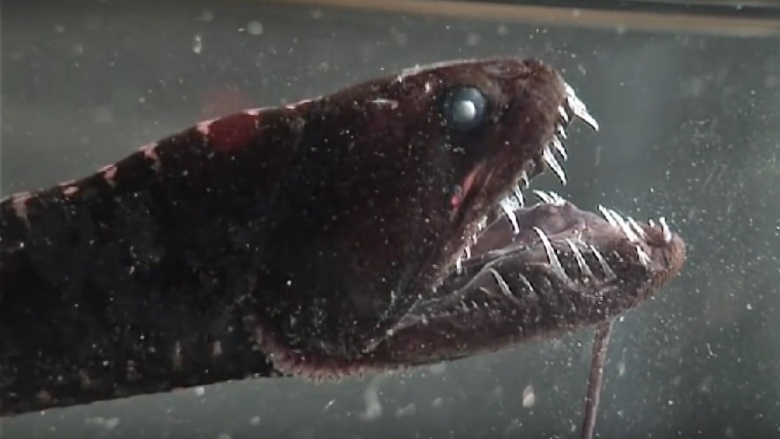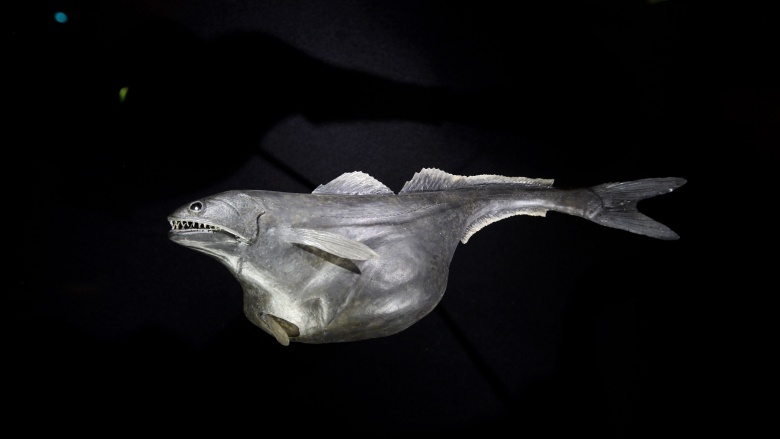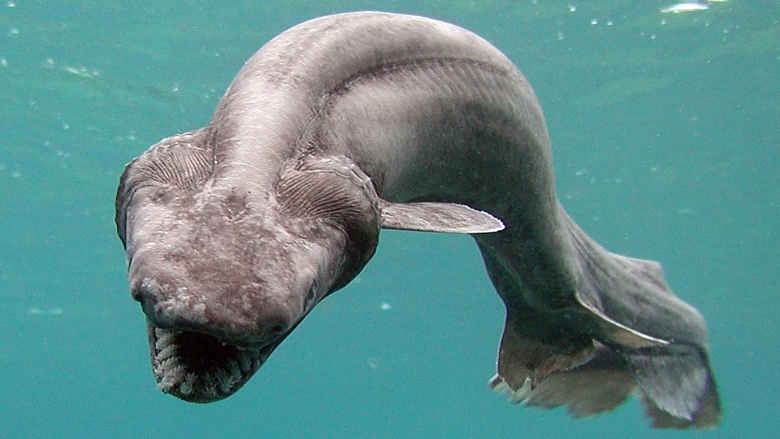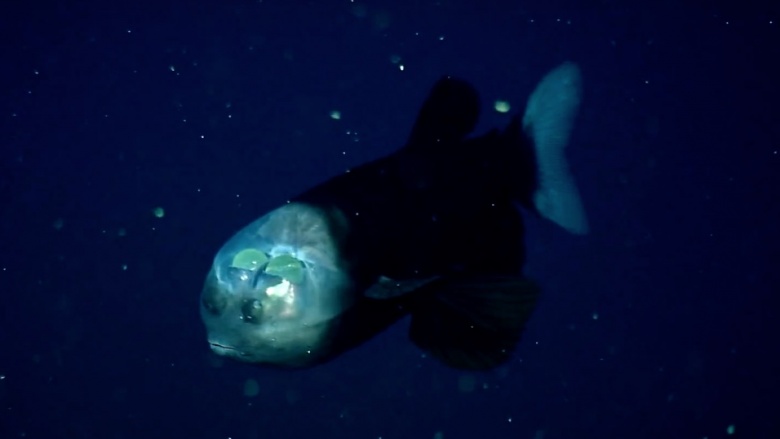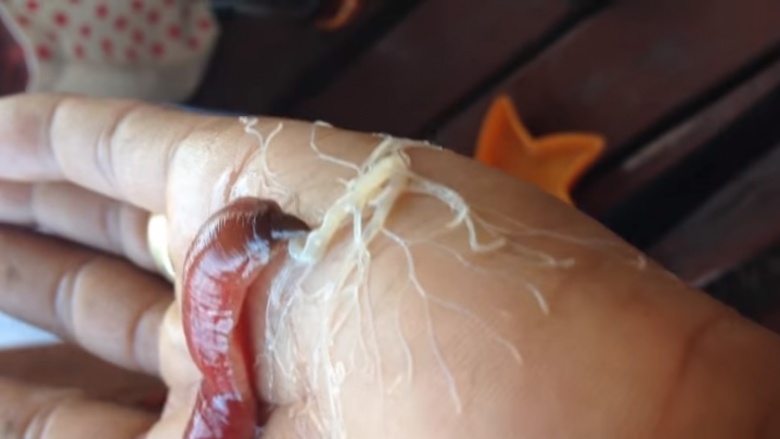Real Sea Monsters Freakier Than Anything On SyFy
The folks at the SyFy channel think they've cornered the market on the weird and unexplained. No way—when it comes to creating frightening-looking creatures, they haven't even scratched the surface of what's possible. Nature has no such problem, as these creatures, which are freakier than anything SyFy has created, already exist.
Giant isopod
Crawling right out of your nightmares is the giant isopod. These things that look like oversized fleas, and grow to the size of a football, live primarily in the Indian and Pacific Oceans and the waters around Australia, although some have found their way to the Atlantic Ocean and the Gulf of Mexico as well, meaning nobody is safe. But don't worry too much about running into one—they live in fairly deep waters, between 560 and 7,020 feet (170-2140 meters) beneath the surface of the waves, though some have wandered into shallower waters from time to time.
Luckily, as freaky and antagonistic as they may look, they're not known to attack people. They mainly feed on things like sponges, sea cucumbers, and other slow-moving creatures. (One was filmed eating a shark's face once, though.) The freakiest thing about them: they don't need to eat that often. One in a Japanese aquarium died after not eating for five years. So they definitely don't need to go on Atkins.
Goblin shark
Prowling waters deeper than 4,000 feet (over 1,200 meters), goblin sharks are known for two things: their incredibly long and protruding snouts, and bear trap-like mouths that practically launch from the heads to swallow prey whole. Considered rare and found in random spots around the globe, the Mitsukurina owstoni wasn't discovered in the west until around 1898 even though, as suggested by its scientific name, the Japanese were already quite familiar with it by that time. They called it tengu-zame, after a mythical creature known for kidnapping children. But the goblin shark has no interest in children ... that any scientist knows of. They prefer to fill their bellies with crustaceans, octopi, and squid, making it the pickiest ugly fish on the planet. Apparently, they've never heard the phrase "beggars can't be choosers."
Lamprey
The mouth of a lamprey has so many razor-sharp teeth, that it even has some on its tongue. So essentially, its three-foot-long body is nothing but teeth, tongue, stomach, and hate. Their MO is to latch onto some unsuspecting prey, at which point the teeth on the tongue bore into the victim's flesh until blood comes gushing out, which they guzzle down. That's right, lampreys are literal bloodsuckers, feeding mostly on other sea creatures—even sharks.
With 38 known species, they cover pretty much every ocean on the planet and have even found their way into the North American Great Lakes, where they've made a habit of clamping onto the occasional swimmer. It's said that lamprey feedings have quite the strange, unsettling sensation, and they clamp on pretty good and are difficult to yank off. We'll just take other people's word for it. Happy swimming!
Pacific viperfish
Its long, needle-like teeth give the Pacific viperfish a face even a mother would despise. Despite the face, it manages to lure prey with its bio-luminescence, making it look like a nightmare swimming at its prey, but only when it's too late. By then, it'll have pierced the poor, unsuspecting fishie with its fine-pointed fangs. As of this writing, little is known about the Pacific viperfish, as it lives in rather deep waters—about 13,000 feet (4,000 meters). However, it does swim up to shallower waters where more prey has gathered at night, to make hunting easier and freak out nightswimmers. One has yet to attack a human, but it's probably just a matter of time.
The black swallower
Haunting tropical and subtropical oceans, this freaky fish earned its name due to its habit of swallowing prey whole. It developed this technique due to its inhabiting waters as deep as 10,000 feet (3,048 meters), where meals are hard to come by. And the black swallower, at only nine- nches long, compensates for that scarcity by gulping down other fish up to ten-times larger than itself, which it then lugs around in a hugely distended belly. Of course, this can backfire on the swallower, as prey can sometimes decompose before they're fully digested, and gas built up through decomposition can, at times, cause the swallower's stomach to burst. That's literally biting off more than you can chew.
Frilled shark
Sometimes called a living fossil, the frilled shark looks more like an undead monster come to haunt the earth's oceans. In reality, this shark isn't too dangerous. Its rows of needle-like, "trident-shaped" teeth, while scary, make it more of a danger to squids and small fish, but scientists have cut their fingers on its teeth while examining deceased specimens.
Making its home in scattered locations around the globe, the frilled shark wasn't first seen until 2004. Since then, some scientists have proposed it—or an assumed gigantic relative—as the source of sea-serpent sightings recorded throughout human history. Almost in response, it and its elongated body have made a semi-regular habit of freaking out swimmers and fishermen during random sightings. In 2007, Japanese fisherman spotted one near Tokyo, and had no idea what they were looking at. Crazy-looking animals sure have an affinity for Japan for some reason.
Barreleye
The barreleye is most likely the only fish that allows someone to see what it's thinking, and that's all thanks to the barreleye's see-through head. Yes, this diminutive denizen of the deep has a transparent skull. According to biologists, it developed this unique feature as a matter of survival—the see-through cabeza not only allows light to pass through, but larger fish don't notice the barreleye, as they look right through it.
Also because of the translucent cranium, the barreleye can move its green-glowing eyes every which way, to keep a lookout for more-savvy predators or for anything it'd like to eat as well, like jellyfish. (Oh, FYI: those round things above the mouth aren't its eyes. Those are nostrils.) But all this info begs the question: how can scientists be sure they've seen it?
The proboscis worm
As innocent as it may look, the proboscis worm, or nemertea, is the worm that freaked out the Internet with videos where it spews long pink or white things to the horror of unsuspecting viewers. Well, those things are the probosces, from which it gained its name and nickname (ribbon worm). For those who don't know, the proboscis is essentially this spineless creature's mouth. So yes, in that video where one shoots its appendage onto some guy's hand, it was trying to eat that guy. But don't worry, he wasn't in too immediate a danger, as nemerteans can't digest anything larger than them.
If you're hoping to see one in the flesh, you may have to pack your bags, as they're only found in the Pacific, from the Philippines to as far north as—you guessed it—Japan. Seriously, Japan, what is it with you and the crazy creatures?

